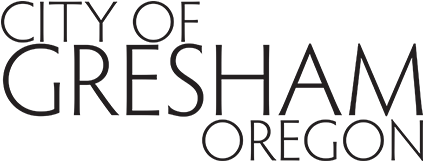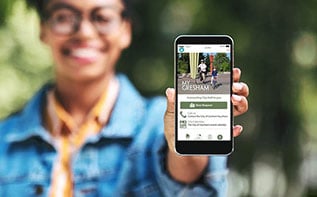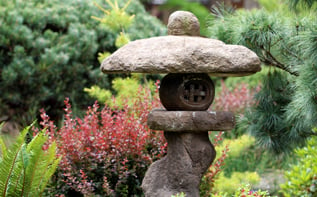- Home
- Environmental Services
- Water Resources Division
- Boil Water Notice
Boil Water Notice
July 31, 2025
There is currently a boil water notice in effect. Read the press release.
Impacted area
- Neighborhoods: Kelly Creek, Powell Valley and a small section of Northeast
- South of Division and east of Highway 26
- Map of affected area
Frequently asked questions
Boil water when |
Boiled water not required |
|
|
Most people who happen to drink this water will not get sick. If you do get sick, the symptoms are similar to food poisoning: nausea, diarrhea, cramps and possibly a mild fever. Contact your health provider if you have concerns.
People who feel their symptoms are a result of consuming drinking water should contact the Multnomah County Health Department Communicable Disease Hotline at 503-988-4454.
The most important thing to do is avoid dehydration. Drink plenty of fluids and avoid drinks with caffeine, such as soda, coffee and tea. If you are concerned about your health or the health of a family member, contact your health care provider.
- Fill a pot with water.
- Heat the water until bubbles come from the bottom of the pot to the top.
- Once the water reaches a rolling boil, let it boil for one minute.
- Turn off the heat source and let the water cool.
- Pour water into a clean container with a cover for storage.
Your water may be contaminated by bacteria. The Boil Water Advisory gives you information so you can take action to protect your health.
If tap water is clear:
- Use unscented bleach (bleach that does not have an added scent).
- Add ⅛ teaspoon (8 drops or about 0.75 milliliters) of unscented household liquid bleach to 1 gallon (16 cups) of water.
- Mix well and wait 30 minutes or more before drinking.
- Store disinfected water in a clean contain with a cover.
If tap water is cloudy:
- Filter through a clean cloth
- Use unscented bleach (bleach that does not have an added scent).
- Add ¼ teaspoon (16 drops or 1.5 milliliters) of unscented household liquid bleach to 1 gallon (16 cups) of water.
- Mix well and wait 30 minutes or more before drinking.
- Store disinfected water in a clean container with a cover.
Remember that containers may need to be sanitized before using them to store safe water:
To sanitize containers:
- Use unscented bleach (bleach that does not have an added scent).
- Make a sanitizing solution by mixing 1 teaspoon (5 milliliters) of unscented household liquid bleach in 1 quart (32 ounces, 4 cups or about 1 liter) of water.
- Pour this sanitizing solution into a clean storage container and shake well, making sure that the solution coats the entire inside of the container.
- Let the clean storage container sit at least 30 seconds, and then pour the solution out of the container.
- Let the empty container air dry or rinse it with clean water that has already been made safe, if available.
Never mix bleach with ammonia or other cleaners. Open windows and doors to get fresh air when you use bleach.
You may choose to use bottled water if it is available.
Boil tap water even if it is filtered. Most kitchen and other household water filters typically do not remove bacteria or viruses.
Do not use water from any appliance connected to your water lines. This includes the water and ice dispensers in your refrigerator/freezer. Most kitchen and other household water filters typically do not remove or kill all bacteria or viruses.
- Use boiled or bottled water to make coffee and ice.
- Most kitchen and other household water filters typically do not remove or kill all bacteria or viruses.
- When the boil water advisory is lifted, consult the owner’s manual to find out how to sanitize appliances.
- Do not use ice from ice trays, ice dispensers, or ice makers.
- Throw out all ice made with tap water.
- Make new ice with boiled or bottled water.
- Wash fruits and vegetables with boiled water that has cooled or bottled water.
- Bring water to a rolling boil for 1 minute before adding food to cook.
- Use boiled water when preparing drinks, such as coffee, tea and lemonade.
- Wash food preparation surfaces with boiled water.
All ice beverages made with non-boiled water should be discarded.
If breastfeeding is not an option, use ready-to-use baby formula, if possible. Prepare powdered or concentrated baby formula with bottled water. Use boiled water if you do not have bottled water. Disinfect water for baby formula if you cannot boil your water (see above for directions on how to use bleach to disinfect water).
- Wash and sterilize bottles and nipples before use.
- If you cannot sterilize bottles, try to use single-serve, ready-to-feed bottles.
No. Do not use untreated tap water to brush your teeth. Use boiled or bottled water.
Yes, it is safe to take a bath or shower, but be careful not to swallow any water. Use caution when bathing babies and young children. Consider giving them a sponge bath to reduce the chance of them swallowing water.
Household dishwashers generally are safe to use if the water reaches a final rinse temperature of at least 150ºF or if the dishwasher has a sanitizing cycle.
To wash dishes by hand:
- Wash and rinse the dishes as you normally would using hot water.
- In a separate basin, add 1 teaspoon of unscented household liquid bleach for each gallon of warm water.
- Soak the rinsed dishes in the water for at least 1 minute.
- Let the dishes air dry completely.
Pets have some innate protection for this type of water contamination. However, some people will prefer to use boiled water for their pets to drink.
Most germs that infect people do not infect reptiles or fish. If your water system is using more chlorine or changing disinfection, be cautious about changing the water in your fish tank or aquarium. Contact your local pet store or veterinarian for more advice.
You can use tap water for household plants and gardens.
Yes, you can shave as usual.
Contacts should be cleaned with appropriate contact lens solution. Hands should be washed with soap and water for 20 seconds with thorough drying before putting in contact lenses.
Yes, it is safe to do laundry as usual.
- Customers should flush all taps for 2 minutes or until the water runs cold before consuming water for the first time. This will flush any potentially contaminated water from the plumbing.
- A boil water notice should not impact your water filters. Filters should be changed according to the regular schedule recommended by the manufacturer.
- A bath or shower would be sufficient to flush any potential bacteria from the hot water heater. To reduce the risk of lead and copper exposure through household plumbing and fixtures, customers should never cook or drink from the hot water tap.
Testing water
Coliforms are a group of bacteria found in plant material, water and soil. Coliforms are also present in the digestive tracts and feces of humans and animals. Most of the time, these bacteria are not harmful.
Water systems test for indicators such as total coliforms, fecal coliforms or E. coli to monitor water quality. If the water system has a positive test for one of these indicators, it can mean recent contamination with soil or human feces.
A positive coliform test means possible contamination and a risk of waterborne disease. A positive test for total coliforms always requires more tests for fecal coliforms or E. coli. A confirmed positive test for fecal coliforms or E. coli means you need to take action as advised by your water system.
Most coliform bacteria are a normal part of the environment. They do not cause disease but do indicate the water might be contaminated by soil or feces. Some rare types of coliforms, such as E. coli O157:H7, can cause serious illness. Although most E. coli O157:H7 outbreaks are from eating raw or undercooked food, cases from contaminated drinking water can occur, but are rare.
Indicator organisms come from the same sources as organisms that make you sick. Indicator organisms are easier to identify, are present in larger numbers and respond to water treatment the same way as harmful bacteria and many other biological pathogens. A biological pathogen is any organism, such as a bacteria, virus, protozoa or parasite, that causes a disease. Biological pathogens are commonly called germs.
Total coliforms is another term for the full group of coliforms. They are indicators of possible water contamination.
Fecal coliforms are one type of coliform bacteria that is found found mainly in animal digestive tracts and feces. Fecal coliforms are a more specific indicator of fecal contamination of water.
E. coli (Escherichia coli) is a species of fecal coliform bacteria. E. coli almost always comes from animal feces. E. coli is considered the best indicator of fecal water contamination. If E. coli is present, harmful bacteria or other pathogens may also be present.
A biological pathogen is any organism, such as a bacteria, virus, protozoa or parasite that causes a disease. Biological pathogens are commonly called germs. There are many different possible pathogens. It is not possible to test for every type of pathogen in every water sample, so water systems use indicators instead.
Water systems test for indicator organisms, like coliforms, to check for possible contamination by biological pathogens. Most coliforms are not harmful, but they come from the same sources as other bacteria and organisms that could make you sick.
After a boil advisory is lifted
Yes. Water dispensers and ice makers are connected to your water line. You need to flush and clean them.
Follow the directions in the owner’s manual or follow these steps:
- Change the filter cartridges.
- Throw out ice.
- Flush the water dispenser for three to five minutes.
- Run the ice maker for one hour.
- Throw out all the ice.
- Wash and sanitize bin areas.
Yes. You may need to run through a regeneration cycle. Follow the directions in the owner’s manual.
Yes. Change the filter cartridges. Some units need disinfecting. Follow the directions in the unit’s owner’s manual.





